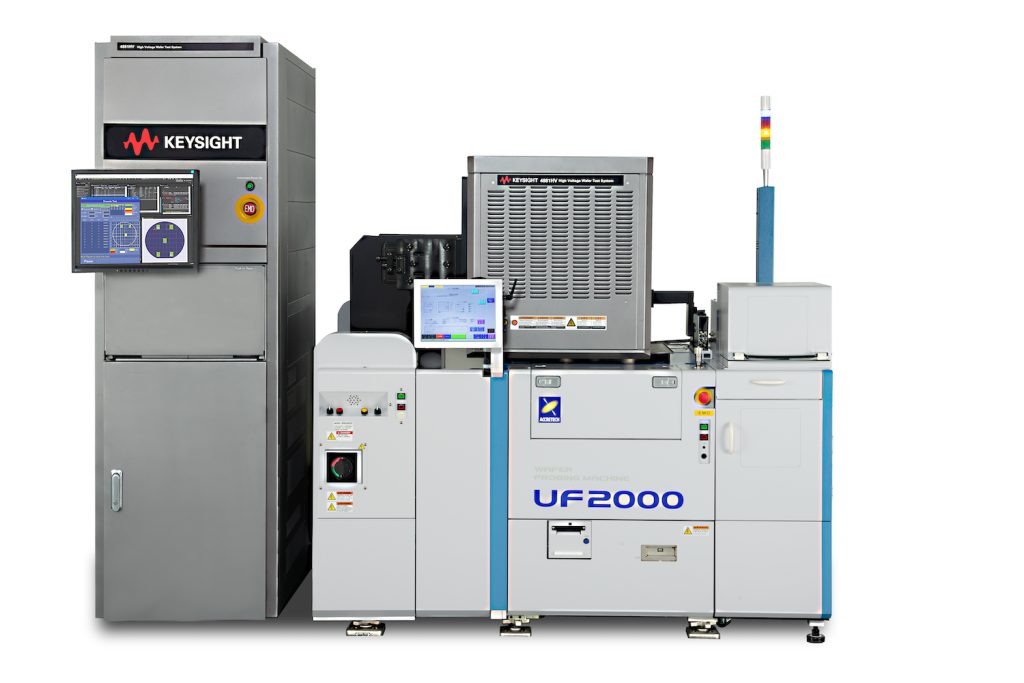In the field of semiconductor testing, automated test systems are a key tool to ensure that electronic devices meet stringent specifications. With the booming market of AI, 5G communications, Internet of Things, automotive electronics, etc., the demand for semiconductor devices has increased significantly, which has further increased the demand for efficient and accurate automated test solutions. Keysight Technologies, Inc.'s recently introduced 4881HV high-voltage wafer test system is the latest attempt to address this challenge.
Keysight's 4881HV system supports parametric testing up to 3kV and is capable of simultaneous high- and low-voltage testing, increasing productivity for power semiconductor manufacturers. The system reduces the time and complexity of switching between devices through integrated automated testing, and provides a customizable solution to meet diverse testing needs.
In the field of power semiconductor testing, wafer testing is a critical part of ensuring device performance and reliability. Wafer testing can identify defects and failures in the early stages of the manufacturing process, which helps manufacturers correct problems in time during the production process to avoid further losses. In addition, by detecting and rejecting defective chips, wafer testing can improve yield, reduce waste, and increase productivity. Therefore, wafer testing is an indispensable part of the semiconductor manufacturing process, which plays an important role in ensuring yield quality, improving production efficiency, reducing costs, and meeting market demand.

Figure: Keysight launches high-voltage wafer test system (Source: Keysight)
In the highly competitive semiconductor market, high-quality products are the key to gaining a market advantage, and wafer testing is an important means to achieve this. ERS electronic has designed a chuck that guarantees ultra-low leakage and avoids breakdown at high voltages of up to 10,000 volts for high voltage/current test environments. The chuck also has a wide temperature range (-65°C to +400°C) to solve many of the challenges faced in wafer test in high voltage/current environments.
In addition, the test challenges of power semiconductor devices include static characterization tests such as breakdown voltage, leakage current, threshold voltage, etc. As semiconductor manufacturing processes advance, testing and validation become even more important. The newly launched PMST series power device static parameter test system provides a comprehensive test system with rich functions such as IV, CV, and trans-conductance, with the advantages of high precision, wide measurement range, modular design, and easy upgrade and expansion.
In the field of automotive electronics, the long-term growth of the semiconductor industry has brought new challenges to test companies driven by the four major trends of "ACES" (automation, connectivity, electrification, and service). As a key leader in the ATE industry, Teradyne's J750, UltraFLEX, EAGLE and other products can help partners reduce engineering costs, improve system robustness, and provide higher output with fewer test cells and increase yield control.
Overall, Keysight's new high-voltage wafer test system, ERS electronic's high-voltage chucks, and Possey's power device test system are important developments in the implementation of semiconductor test automation. These systems not only improve test efficiency and accuracy, but also reduce human error through automation and integration, improving the overall quality and reliability of semiconductor devices. As technology continues to advance, we can expect semiconductor test automation to become more intelligent and flexible to meet the growing market demand.






